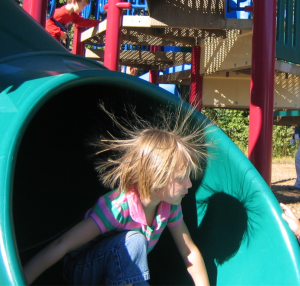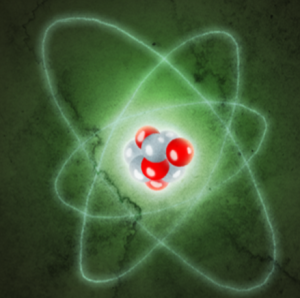When my grandparents were my age, most products were driven form the top down – large companies designed multiple products, tested them through various trials until they found something the public was willing to pay for, then produced it and sold it in stores.
I’m not a large company nor do I have lots of money to pay for every expense incurred in the process of bringing my game, Atomic Zero, to the market. I am just one small guy with one big dream! And Kickstarter is the place where small people like me go to turn big ideas into a reality.
Here’s how Kickstarter works
I have a big idea, so I create a page on Kickstarter.com that explains everything about my idea. Stuff like:
- Why I think this idea is better than all the other dumb ideas I’ve had,
- All the work I have already put into this project,
- How I will design it, manufacture it, and deliver it,
- Why I believe I am competent to complete this project,
- How much money I need to make it work and,
- What I will give you for donating money to it.
Now, people like you hear about my project from a friend or through social media and then take a look at my project page. You either find something that interests you or you don’t.
While perusing the page you may think, “This guy talks like Ralph Wiggum from The Simpsons (‘I drink blue juice form under the sink’)” and you start to like me (or maybe you just feel sorry for me), or maybe you like my idea and want to see it become a reality, or maybe you really like the rewards I am giving away for donating.
Put simply, you either decide to donate (congratulations! You’re now a “Backer”) or you leave my page hoping I drink enough blue juice to keep me from ever trying this again. If you decide to become a backer, you usually have a couple options:
- A couple dollars gets you a HUGE thank you and updates about the project,
- A pledge somewhere around $20 or $30 gets the full version of the game (or the product)
- And bigger donations (somewhere around $75 up to a couple thousand dollars) gets you really cool rewards like a character designed after your likeness, or your name embedded in the product, or something else very personal that makes meager folk me feel significant!
When the project ends (they usually run 30 to 60 days), I either receive all the money donated or NOTHING! I receive all the money donated if the total amount pledged exceeds my pre-set funding goal, or I receive nothing if do not meet this funding goal.
This “all or nothing” is an important safety net for both the project creator and the backers. Here’s why:
If I need $10,000 to manufacture and ship my product to you, but I only receive $6,000 in pledges, then I still have to manufacture and ship the product to all the people who pledged that $6,000.
But the product costs $10,000 to manufacture and ship, so I would have to fork up $4,000 of my own money. As a result, Kickstarter gives the money back to every backer if the project doesn’t meet the preset funding goal.
Most project creators will already have spent about that much on their project before ever launching it on Kickstarter, so most don’t have that cash laying around to bridge this gap. This protects both the project creators and the backers!
Now here’s why I want to launch Atomic Zero on Kickstarter.
I think games that teach could be an incredible thing for every student, classroom, or family to have around to get the brain juices flowing and polish up on a topic. I want to start with chemistry because I believe knowing chemistry enhances the way we view the world, and enriches our appreciation for the world around us. And what better way to learn anything than by playing a game!
I have already spent about $3,500 on getting the game to where it is. But manufacturing will cost another $10k to $15K, plus a couple thousand for shipping and a couple more to finish the graphics and get it ready to print (designers are not cheap now-a-days).
So I need your help to raise this amount of money and in return, I hope to give you copies of the game, never-ending social media praise, advice on your next Kickstarter projects, big warm hugs (NO wet kisses unless your name is Marlene or you are my mom – yes I still proudly kiss my mommy!), and many other things that we think of together in the mean time ;-)
We will hopefully be launching Atomic Zero in early February of 2014. I’ll keep you posted. In the meantime, please subscribe to our email updates and feel free to leave any comments or contact me personally.





